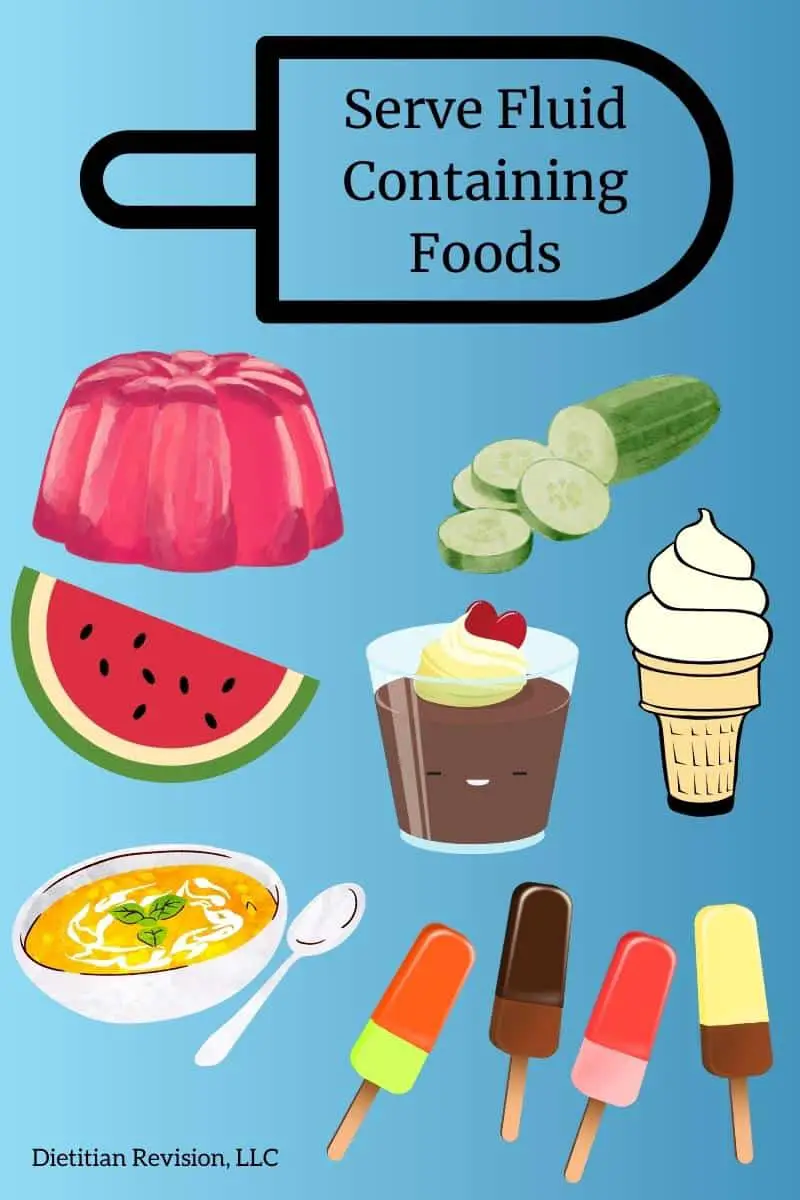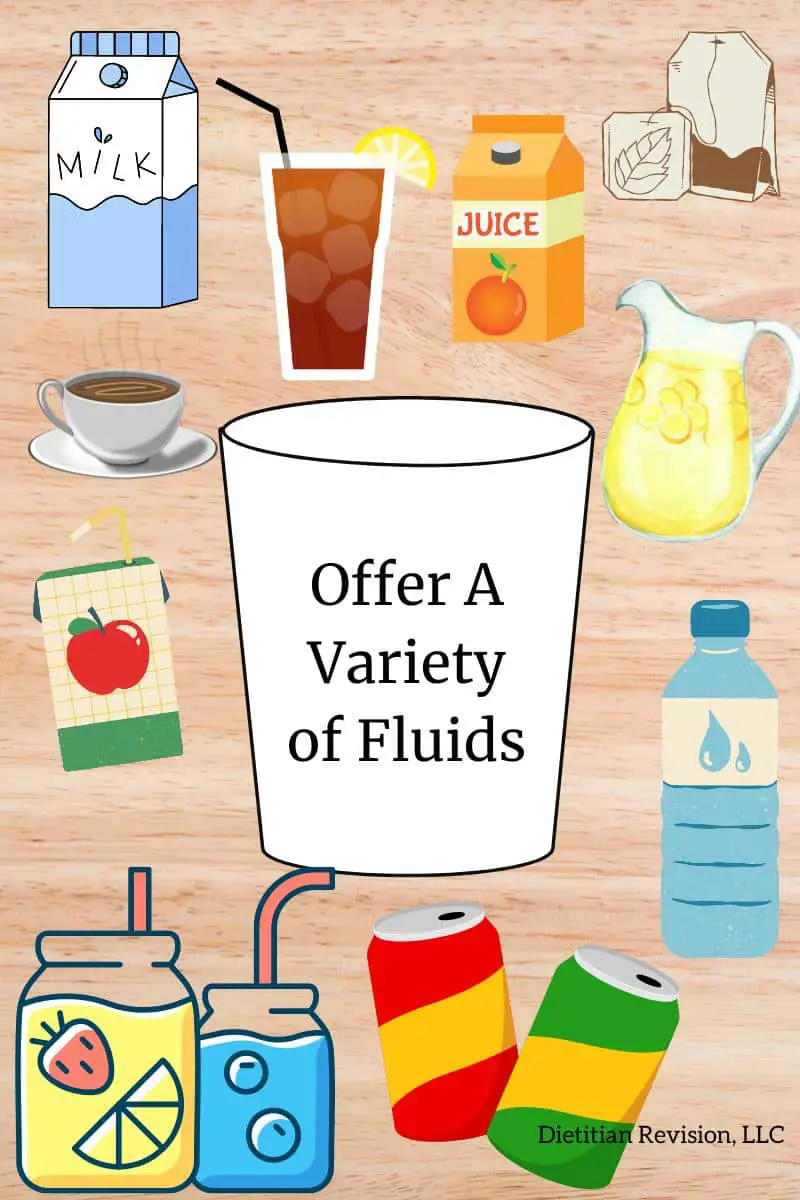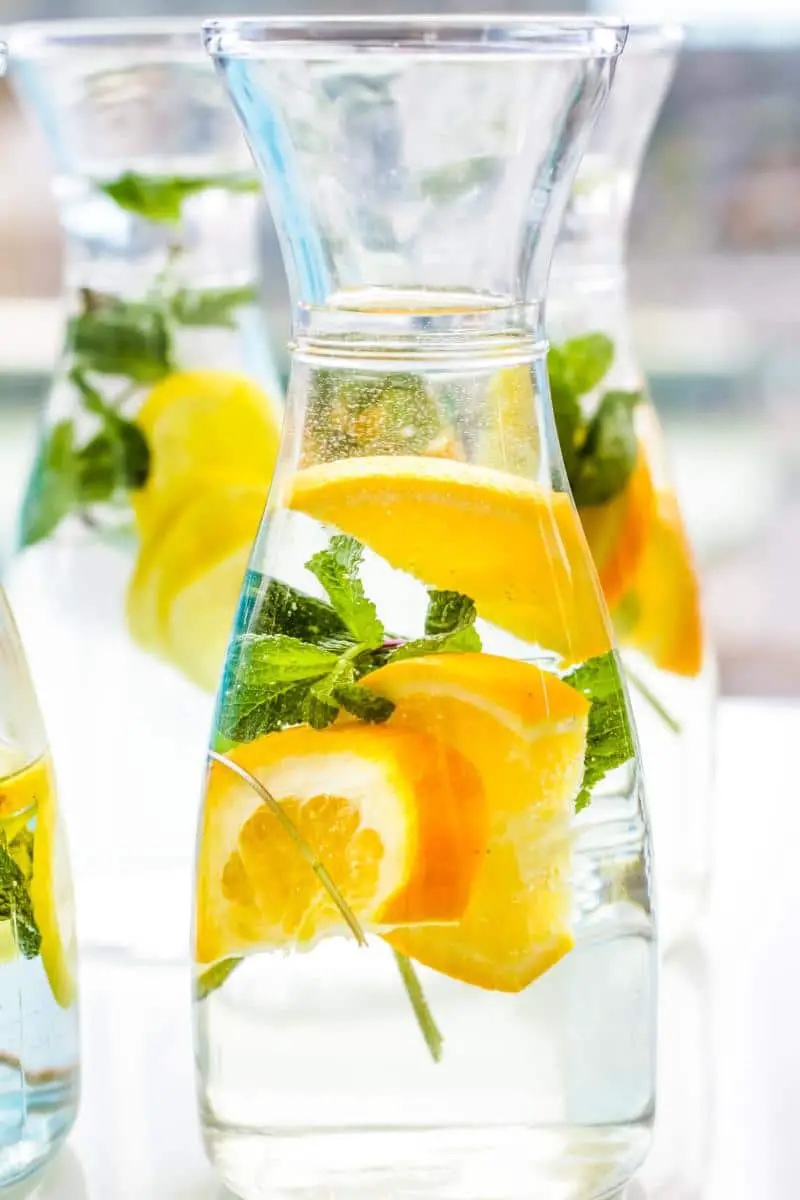Proper fluid intake can be challenging for many older adults. Dehydration comes with many complications. Let’s explore some interventions for dehydration in the elderly.
*This article contains affiliate links. I may earn a commission from qualifying purchases at no extra cost to you.
Dehydration Basics
Dehydration occurs when not enough fluid is consumed to offset losses. This is especially common in the elderly.
Sense of thirst decreases with age. Medications and medical conditions can also increase dehydration risk.
Dehydration can have many negative consequences, making adequate hydration especially important for older adults.
Poor hydration increases risk of (1):
- Constipation
- Delirium
- Falls
- Urinary tract infections
- Hospitalizations
- Morbidity & mortality
- Delayed wound healing
- Renal dysfunction
Since poor hydration status has so many negative consequences, attempting to prevent dehydration and treat it early on is important for the elderly.
Interventions for Dehydration
Many older adults do not have a strong sense of thirst, so reminders and encouragement to drink is usually necessary.
Replacing lost fluids and electrolytes is necessary for treating dehydration. Here are some strategies to increase oral fluid intake:
- Try different types of glasses and cups. Switch up colors and materials
- Prompt to take frequent sips throughout the day.
- Some may drink better through a straw (as long as swallowing difficulty isn’t an issue)
- Use contrasting colored drinkware
- Provide a social environment
- Offer fluids at and between meals
- Try mocktail hour
- Increase variety of fluids offered
- Keep beverages in view throughout the day
- Serve high fluid foods like watermelon and other fruits.
- Incorporate popsicles into dessert or snack rotations
- Assist with drinking as needed
- Smaller, lighter weight cups may be easier to handle, especially for those with frailty
- Cups with handles may be easier to manage
- Utilize adaptive drinkware if difficulty self feeding is an issue, such as with tremors or Parkinson’s disease
- Try drinkware with measurements for better tracking
- Give daily intake goal
- Encourage moderation of “dehydrating” beverages, such as caffeinated drinks and alcohol
- Routinely have labs monitored, especially if using fluid depleting medications, such as diuretics
- Electrolyte drinks may help especially when dehydration is caused by excess losses (i.e. increased sweating, vomiting, or diarrhea)
- Keep favorite beverages on hand
- Add fruit slices to water: try lemons, oranges, frozen berries, or even cucumbers
- Seek treatment for any ongoing vomiting or diarrhea
- Attach cup holders to walkers and wheelchairs to keep fluids accessible
*This article contains affiliate links. I may earn a commission from qualifying purchases at no extra cost to you.

Intravenous Fluids
In more severe cases of dehydration, especially with electrolyte imbalances, intravenous (IV) fluids may be necessary.
IV fluids go through a line right into the veins for quick recovery of dehydration.
This treatment occurs most commonly in a hospital setting for quick recovery from acute dehydration.

Practical Takeaways
Dehydration can contribute to many negative health consequences, especially for the elderly.
Using strategies to increase fluid intake is important for prevention and early intervention of dehydration.

*This article contains affiliate links. I may earn a commission from qualifying purchases at no extra cost to you.




Lori Klymko-Pickup-Crawford’s insightful article on interventions for dehydration in older adults is a well-crafted guide for caregivers. The practical tips, like using contrasting colored drinkware and incorporating popsicles into the diet, showcase a deep understanding of the challenges faced by the elderly. As a reader, I appreciate the author’s hands-on experience in geriatrics, adding a valuable layer of authenticity to the advice provided.
Lori’s insights on dehydration in the elderly are incredibly valuable. After implementing her suggestions, I noticed a significant improvement in my grandmother’s hydration habits, especially with the adaptive drinkware for her tremors. The mocktail hour was a delightful touch!
This blog post is incredibly timely and useful! I remember when my grandmother struggled with dehydration due to medication she was taking; switching her to lighter cups with handles and offering her watermelon slices really made a difference in her hydration levels. The idea to attach cup holders to walkers and wheelchairs is pure genius and something I wish we had thought of sooner!
I recently had an experience with my elderly grandmother who suffered from dehydration. It was challenging to get her to drink an adequate amount of fluids, and she often forgot to do so. The suggestions provided in this post, such as using contrasting colored drinkware, incorporating popsicles into her snacks, and attaching cup holders to her walker, would have been extremely beneficial in preventing her dehydration. I appreciate the practical takeaways and will definitely implement these interventions in the future to ensure the well-being of my loved ones!
I’m so glad you found it helpful!
Thank you for the information.
You’re welcome. I’m glad you found it helpful.
Love this!